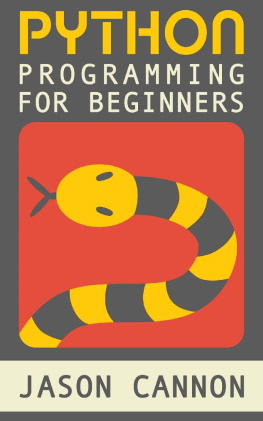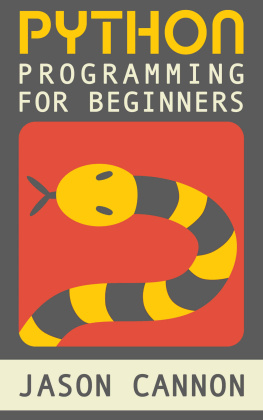Kirk Kaiser - Make Art with Python: Programming for Creative People
Here you can read online Kirk Kaiser - Make Art with Python: Programming for Creative People full text of the book (entire story) in english for free. Download pdf and epub, get meaning, cover and reviews about this ebook. year: 2017, publisher: leanpub.com, genre: Home and family. Description of the work, (preface) as well as reviews are available. Best literature library LitArk.com created for fans of good reading and offers a wide selection of genres:
Romance novel
Science fiction
Adventure
Detective
Science
History
Home and family
Prose
Art
Politics
Computer
Non-fiction
Religion
Business
Children
Humor
Choose a favorite category and find really read worthwhile books. Enjoy immersion in the world of imagination, feel the emotions of the characters or learn something new for yourself, make an fascinating discovery.

- Book:Make Art with Python: Programming for Creative People
- Author:
- Publisher:leanpub.com
- Genre:
- Year:2017
- Rating:5 / 5
- Favourites:Add to favourites
- Your mark:
Make Art with Python: Programming for Creative People: summary, description and annotation
We offer to read an annotation, description, summary or preface (depends on what the author of the book "Make Art with Python: Programming for Creative People" wrote himself). If you haven't found the necessary information about the book — write in the comments, we will try to find it.
Make Art with Python was written to teach creative people the joy of computer programming.If youve tried to learn programming with traditional books or online courses, only to get stuck, this book is for you. With step by step, visual programs, we teach the fundamentals of computer programming so creative people can understand.Make Art with Python teaches programming for creative people.
If youve struggled with learning programming in the past, or have thought to yourself that youd never learn to program, this is the book for you.
It takes a non-traditional approach to teaching computer science and programming through visual programs.
Most programming books or courses focus on math problems and text manipulation as ways to teach the fundamentals of computer programming. Instead, Make Art with Python focuses on building creative, visual programs to learn the basics of computer programming and computer science.
In this book, well use the main Python interpreter, also called Cython. As an interpreter, Python reads our programs line by line executing each instruction in order from the files we write. Indeed, we can also type out our programs directly into Python, and have our programs run as we type. For a beginner, this makes starting with Python less frustrating, and makes making mistakes less costly.
Python has also been around for a long time, receiving decades of continuous improvements from some of the best programmers in the world. Because of this, its also got over a hundred thousand libraries, or programs which extend the capabilities of the Python program itself.
Libraries can connect our Python programs to the internet, write AI, draw images, control 3D printers, direct robots, and more. Each of them just gives us a new set of tools to incorporate to our programs. Finally, Python is a very easy programming language to read, compared to most languages. At first, looking at Python code might seem confusing, but there are very simple rules for Python code relative to other languages. It uses a lot of white spaces to designate what parts of the code belong to each other. This makes reading other peoples code easier, and gives plenty of other, open source code to look at if we get stuck.
If youve never considered yourself a math person, or you consider yourself a language, or visual first learner, the exercises will quickly get you up and running. Youll be writing your first program right from the beginning, and each chapter will bring about a new, fundamental insight about the process of programming.
Kirk Kaiser: author's other books
Who wrote Make Art with Python: Programming for Creative People? Find out the surname, the name of the author of the book and a list of all author's works by series.








